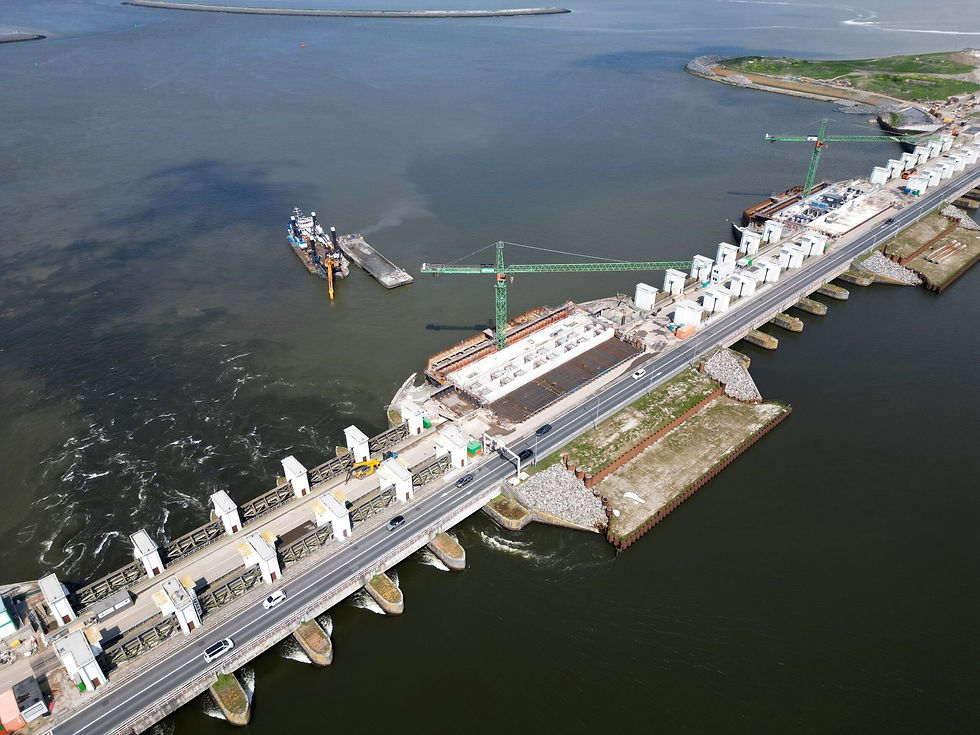How The Netherlands Innovates with Sustainability Solutions to Protect Its Coastline
- mrafi5
- Sep 8
- 3 min read
Brought to you by IBEC Intelligence
The Netherlands stands out with its innovative approaches to sustainability, particularly when it comes to managing its coastline. With a significant portion of the country below sea level (hence, the name, Netherlands), the Dutch have long been pioneers in water management and coastal protection. Today, they are implementing a range of creative sustainability solutions that both protect the coastline and enhance biodiversity. These creative efforts promote the country’s resilience against climate change.

Respecting Nature and Building with Nature in Mind – One of the most groundbreaking approaches is the Dutch initiative called "Building with Nature." This method integrates natural processes into coastal and river management. By using sand and vegetation to create natural barriers, the Dutch can enhance coastal resilience while promoting biodiversity. For example, creating sandbanks and dunes acts as a buffer against storm surges and provides habitats for various species. Research indicates that coastal ecosystems can reduce wave energy by up to 70%, significantly lowering risks of erosion.
Artificial Reefs – The Netherlands is investing in artificial reefs to support marine life and enhance fishing opportunities. These structures create new habitats for fish and other marine organisms, promoting biodiversity. A study published in the Journal of Applied Ecology found that artificial reefs can increase fish abundance by up to 20 times in estuaries with limited natural reefs. By strategically placing these artificial reefs, the country helps restore ecosystems that have been degraded because of human activity. In turn, this boosts local economies that are reliant on fishing and tourism.
Dune Reinforcement – Coastal dunes play a critical role in protecting against flooding and erosion. The Dutch are actively reinforcing these dunes by planting native vegetation, which stabilizes the sand and enhances the natural defenses of the coastline. This approach protects the coastline and helps maintain the unique landscapes that are vital for tourism and recreation. Statistics show that well-maintained dunes can reduce flooding risks and prevent overwash by up to 50% during storm events.
Sustainable Beach Nourishment – Beach nourishment has become a common practice in the Netherlands, where sand is added to eroding beaches to make them stable and restore their size and functionality. Notably, the Dutch are taking this process a step further by sourcing sand from sustainable locations, such as riverbeds. This helps ensure that the nourishment process supports local ecosystems. According to the Dutch Ministry of Infrastructure and Water Management, beach nourishment projects have successfully replenished over 60 million cubic meters of sand since 1990.
Climate-Resilient Urban Planning – Cities along the Dutch coastline, such as Rotterdam and The Hague, are taking active steps to incorporate climate resilience into their urban planning. This includes creating green roofs, permeable pavements, as well as green spaces that absorb rainwater and reduce runoff. A report from the Climate Adaptation Strategy indicates that implementing these measures can reduce urban flooding by up to 40%, enhancing the quality of life for residents.
Innovative Water Management Systems – The Netherlands is leveraging advanced technology for water management. Smart drainage systems and real-time monitoring solutions allow for better management of water levels and reduce flood risks. Research shows that these systems can improve response times to flooding. Such rapid responsiveness ensures that the coastline and surrounding areas can adapt to changing weather patterns and rising sea levels.
Community Engagement and Education – Sustainability solutions are most effective when communities are involved and actively embrace those initiatives. The Dutch are actively engaging local populations in coastal protection efforts through education and participatory projects. In fact, local residents are active drivers and supporters of such sustainability initiatives. By raising awareness about the importance of coastal ecosystems, the Netherlands has successfully created a culture of stewardship and responsibility. Studies indicate that community engagement can increase public support for conservation initiatives by over 60%.
The Netherlands stands out as a beacon of innovation in coastal sustainability. Through creative solutions that integrate natural processes, technology, and community engagement, the country is actively protecting its coastline and enhancing the resilience of its ecosystems. In effect, with these sustainability initiatives, The Netherlands secures its continued viability as a country and successful future. As climate change continues to pose significant challenges, these initiatives serve as a model for other nations facing similar threats.
Use Various Certification to help your organization embrace greater sustainability, our IBEC experts will guide you on that path.




Comments